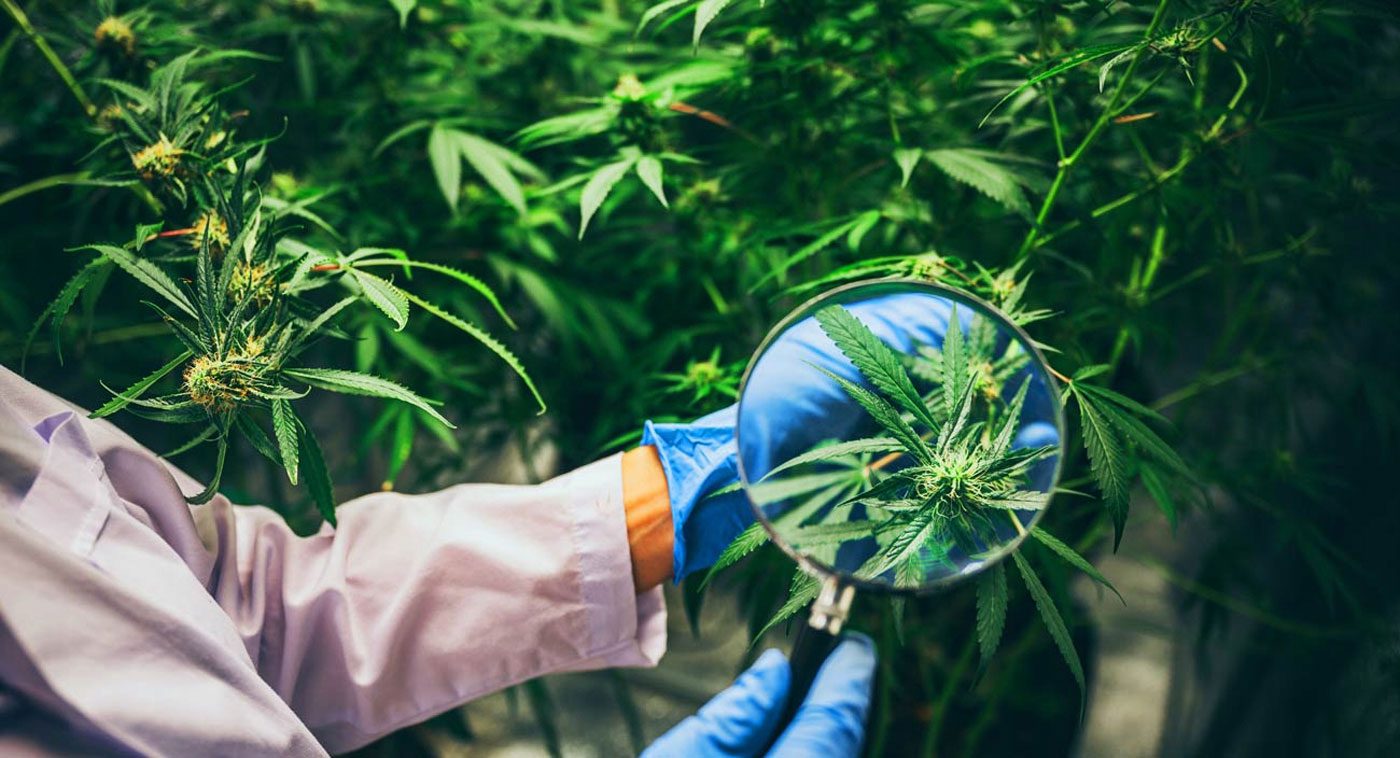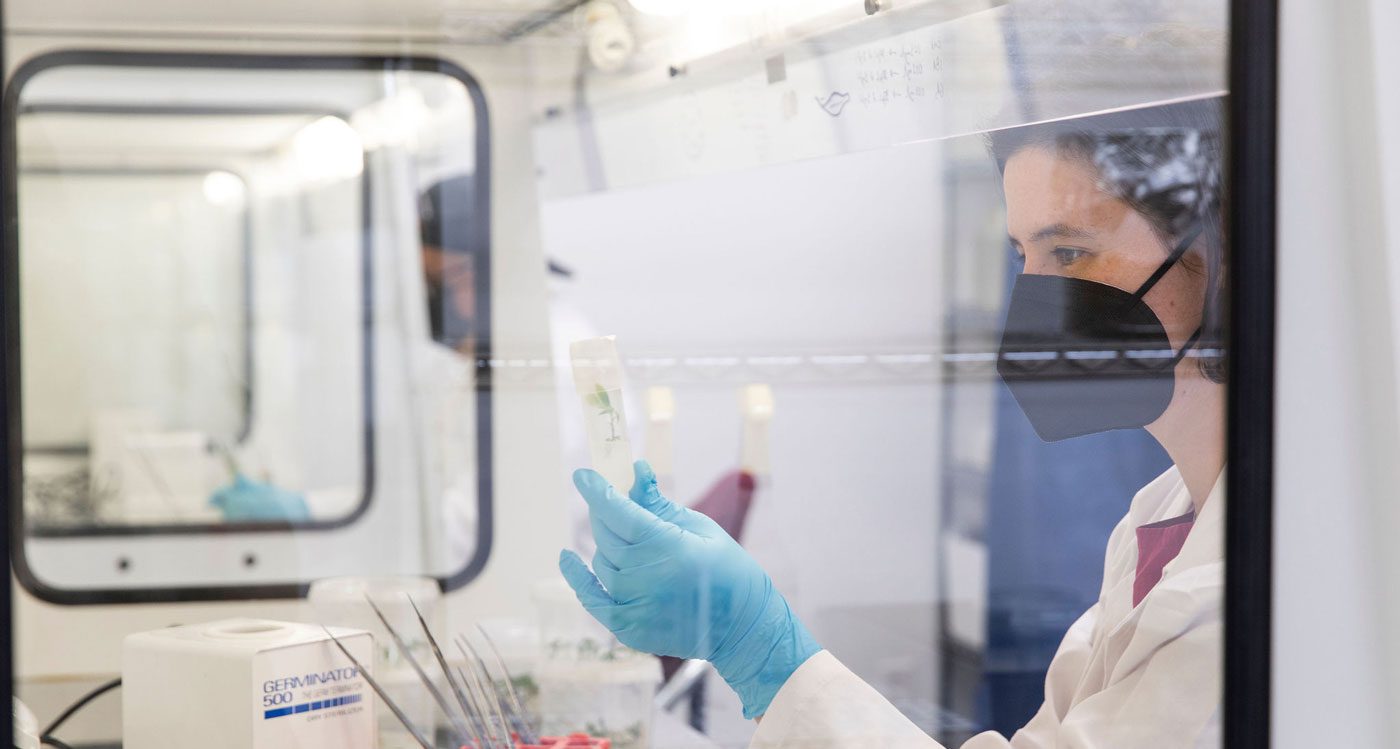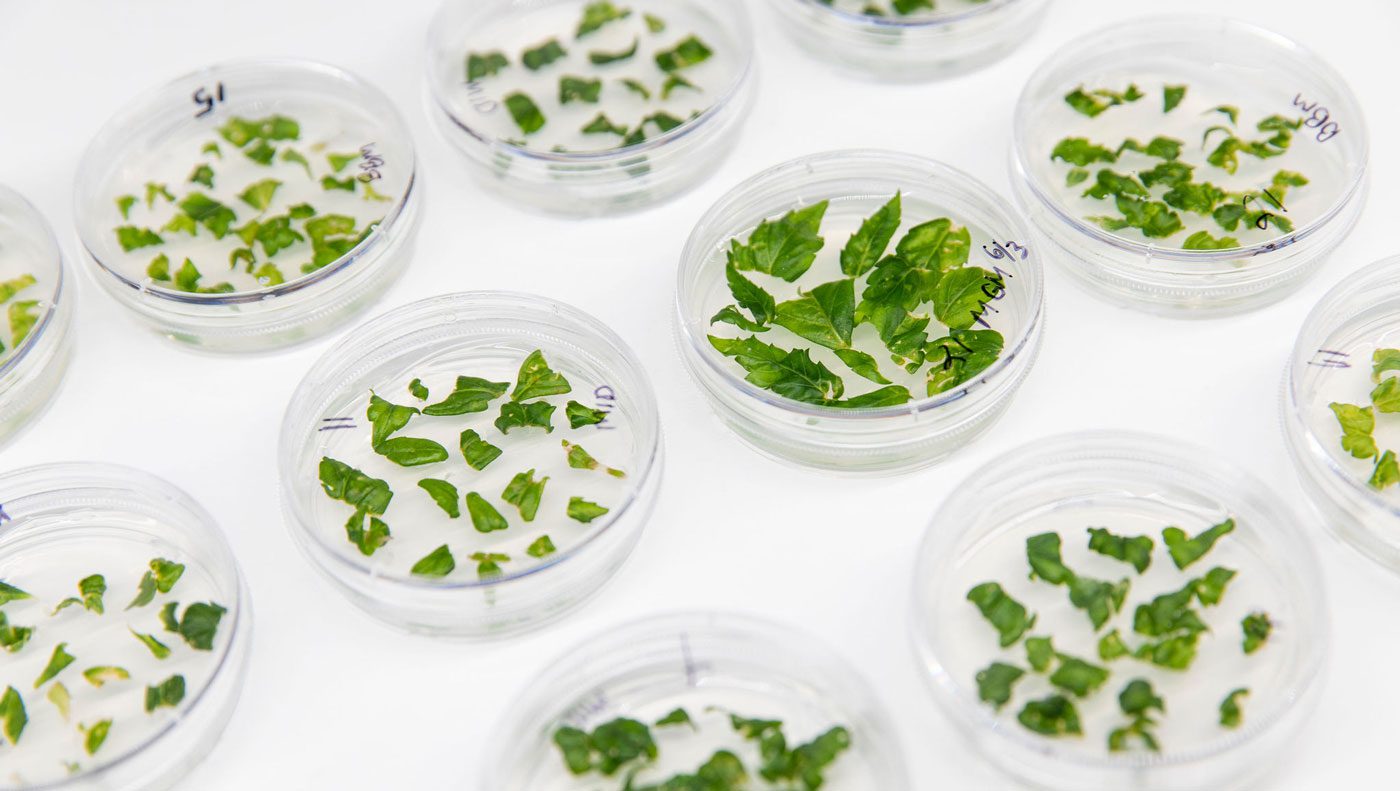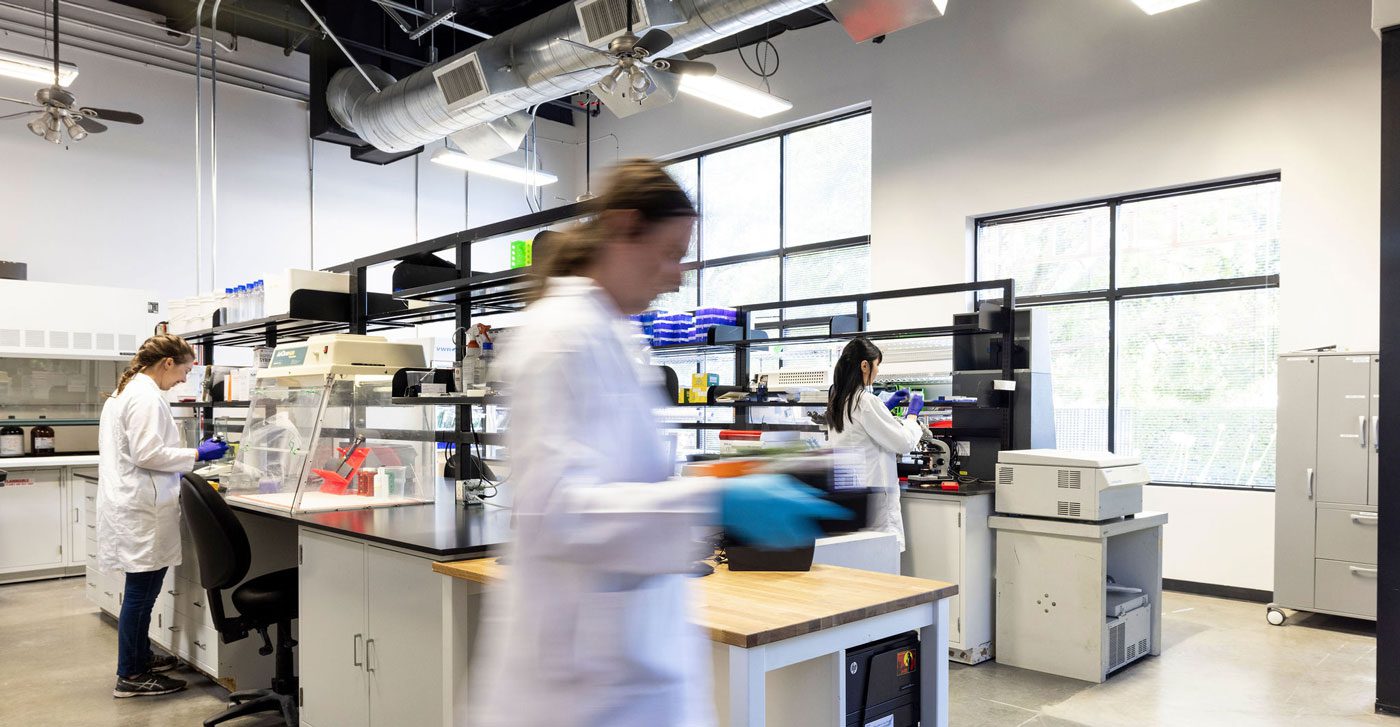It’s likely that you have heard growers talking about hop latent viroid and cannabis disease lately — the plant viroid has been detected in more widespread parts of the country lately, including in areas where it was not previously a problem and areas where cannabis cultivation is newly legal. The viroid was first noticed in California in 2017, when the viroid jumped from hops to cannabis and caused what was called “dudding disease.” Dan Grace, CEO of Dark Heart Nursery, noticed the symptoms of HLVD in cannabis and contacted Dr. Jeremy Warren, who had received his PhD in plant pathology at University of California – Davis, about identifying the cause of the cannabis plant health issue. Dr. Warren was the first person to identify that hop latent viroid was the cause of HLVD in cannabis. HLVd is an infectious disease that stunts the growth of your plants, which in turn causes less vigorous plants, less potency, less yield. It can easily spread and growers must actively avoid and manage it for the health of their cannabis plants. Dr. Warren, who leads the plant science division of Dark Heart Industries, tells us what we need to know to avoid and manage this scourge.
At what point in the growth cycle would you start noticing problems?
You notice it during veg and flower, but I think most people notice it during flowers because that’s the most recognizable. When people first notice cannabis plant health issues in the grow, they have two clones next to each other that are the same strain and age. One is beautiful, frosty, smells great, but the one right next to it has much fewer trichomes, smells like alfalfa or grass, and probably has smaller buds. The first-time grower may attribute it to something else or think they may have done something wrong. However, if they don’t do anything proactive at this point, they will see the HLVD (Hemp Latent Viroid) steadily spread through their growth over time. It takes a little more of a trained eye to spot it during veg. Cannabis usually has lower branches which have a sort of upright branch structure where branches are angled off the main stem at 45 degrees or more. But with the viroid-infected plants, they can come off at about 90 degrees, and they’ll often be brittle. You’ll touch it and it snaps off in your hand. In veg, oftentimes we see smaller plant size in viroid-infected plants, so it’s not growing as quickly and the nodes will be a little tighter spaced.

Does hop latent viroid resemble any other problem?
Luckily for growers, hop latent viroid symptoms are fairly unique. More often, people see symptoms of other pathogens or nutrient issues and attribute them to the viroid more often than the other way around.
What happens when you have side-by-side plants in a row and two or three plants might get it out of 10 but the other ones don’t?
A number of things are happening in that case. One of the things is the plant that looks healthy might actually be infected as well, it’s just not showing up yet. The reason it’s called “latent” is that in some plants it will show itself and in others it may take more time or maybe even never show obvious symptoms. The other thing going on is how it’s spread. 95 to 98% of viroid spread is from people with pruners in the grow, going down the line and cutting plants. If you’re not sanitizing your pruners in between cutting plants, with bleach or Virkon and letting them soak, you can very easily spread it to multiple plants down the row. We’ve done a few experiments in our lab where you have an infected plant at the start of a row, prune that one, but don’t sterilize the pruners between plants and continue like this down an entire row and you can get viroid infection up to 10 plants down the row. So it’s not 100% that if you cut a plant and then cut another one it will get it. We saw that about half the plants became infected in this manner. So the big takeaway here is that even one person not sanitizing their tools can spread the viroid very quickly, leading to an up to 5x increase in the number of infected plants.
Let’s talk about prevention.
The best way to handle cannabis disease, if possible, is clean, viroid-free genetics, particularly important for combating HLVD (Hemp Latent Viroid Disease) in cannabis. So buy from a nursery that tests for cannabis diseases or you can test them yourself via PCR for HLVD in cannabis. Exclusion is the best option, right? The one caveat there is the latency of cannabis diseases. Sometimes you see the disease in the cannabis plant and sometimes you don’t. Sometimes the amount of viroid can be so low that it’s undetectable. So generally, you have to test the cannabis plant three or four times to make sure it’s “quote unquote,” clean. From our experience, if you tested each of your new genetics four times out of 100 new genetics tested you might miss one that’s actually infected with a cannabis disease. So that highlights the effectiveness of testing your mother block to get rid of the infected material and setting up an ongoing monitoring program for HLVD in cannabis. It is possible for the viroid to be transmitted from cannabis plants touching, but that’s a very low rate compared to people transmitting it with pruners. Maybe that one plant spreads it to one or two next to each other during a single growing season. Test your plants for cannabis diseases and make sure they’re clean, especially in the mother room, take the time and test them all, and keep your pruning sanitation on point and you can get rid of HLVD in cannabis. But it is hard because you need everybody on board. It takes one person with pruners not following SOP to sterilize and one plant infected with a cannabis disease can turn into five very quickly. That could happen in a day.

What is the best sanitation procedure for preventing cannabis disease?
There are a couple of studies around other crops, including cannabis, where we draw this information from. Wiping is a good step, but it’s not 100%. The best is for pruners to get soak time for cannabis plant health. 10% bleach has been shown to do quite well and is super cheap. Soak for a minimum of a couple minutes, but the longer the better, realistically. We suggest people get like a red solo cup or a beaker with a sponge in the bottom that you’re not going to use for anything else and put your bleach solution in there. Then have three or four pruners. Use the first pruner on a single cannabis plant and when done with that plant drop it back in the beaker, then use the second pruner on the second cannabis plant, drop that in, then by the time you get around to that fourth one it’s probably been 10 minutes at least, so you are getting plenty of soak time to sanitize those pruners between cannabis plants. Some growers will even have one pruner per mom and only use that pruner on that mother cannabis plant.
What about shoes or clothing?
It is possible that if you have a high infection rate and you rub against plants with your clothes that you can infect a healthy plant. Some growers are super concerned about that and wear lab coats for each block that get washed after one use, and they wear gloves. If you’re going after that level of cleanliness it might be worthwhile just in your mother block. The most impactful infections are ones that happened because you took clones off an infected plant, or they got pruned early as a young plant and got the infection. That’s what you really want to avoid.
You have said a couple times that if you are diligent with your sanitation, you can get rid of it. It sounds like something that can be cured, so to speak.
You can “cure” the viroid from plants. Let’s say you have a prized strain but it’s got the viroid but it’s the only copy you have. You can take that and do a pretreatment with meristem tissue culture and 12 to 16 months later, you’ve got a clean version of that plant again. But that’s not doable at scale. There isn’t that sort of cure for a grow that has it going on right now. There’s no spray, you can’t do extra nutrients, or any sort of thing that’ll cure the plant at this time. What that leaves you with for management is clean stock and following SOPs for sanitation. You can totally eliminate the viroid from a grow only focusing on those two things.
That strategy would be to remove the plants that you know are infected and keep testing for it.
If you get plants from a nursery that says they test for it, then bring those in and keep them separate and test for it a few times yourself. Throw out anything that’s infected. If you have an ongoing grow, it’s more tricky. A lot of grows have 20 to 100 different strains, and if they’re 20% infected, maybe 20% of their genetic stock has the viroid. If you’re coming from a perspective of zero viroid, you get rid of those 20 infected strains from your grow. Maybe you have an off-site place where you keep fresh genetics, and they’re off in their own little area until you know what to do with them. But if you want to get the viroid out, you have to get the infected plants out. We do biweekly testing in our mother block and are at 0%. Not to make this a pitch for testing, but we have seen people get their grows down to zero and then they stop and it’ll come back (most often from new genetics that were brought into the facility). The bigger your grow, the harder it is to keep it at zero and complete team buy-in to SOPs becomes extremely important.

Has there been any new research or knowledge that’s come out recently?
We are lucky to have a great R&D team at Dark Heart Nursery. Richard Philbrook and Sydney Gerstenberg have been doing some interesting research around seed transmissibility and unfortunately, the viroid does seem to be seed-transmissible at a low rate. In hops and in cannabis we’re seeing a rate of ~5 to 10%. Interestingly, we’re seeing some strain dependence. Some strains have a higher percent of the viroid transmitted from seeds than others. So there’s still a lot of work to do here to understand why that is. The important takeaway here is that people need to understand that just because you sprout seeds, you shouldn’t expect them to be viroid-free. There’s still a chance that seedling could be viroid-infected. It’s not all doom and gloom though because a 5% infection rate still means that 95% of your seedlings would be expected to be viroid-free. So depending on your use case, it may warrant testing these seedlings if they will be used in a breeding program or used as mom stock in the future.
Does that mean it’s genetically encoded in the seed?
No. Some viruses and viroids are able to pass into the germline of the plant, so it’s present inside the embryo but is not integrated into the plant’s genome. It’s important to understand that if you take a plant that’s infected by the viroid and you harvest the seeds, grind the entire seed up, and you test them for the viroid, a large number of them will test positive for the viroid because it can be in the outer seed coat as well as the embryo. However, if you plant that seed and grow it, and then you test the leaves of this plant, a much lower percentage of those will be infected with the viroid. This is where we get the 5 to 10% infection rate. This seed transmissibility does seem to be strain-dependent, though, with some strains pretty close to zero.

Do you have any understanding of why some strains are more susceptible to cannabis disease?
I wish! That’s the question to answer, right? I don’t think there is any strain that won’t get it. But there is a spectrum where some strains will hardly ever show symptoms and some strains look terrible and 100% of the time the plants will show symptoms. Some that often show striking visible symptoms of cannabis plant health issues are some of the OGs, Strawberry Banana, and Chemdawg.
OK, so bottom line?
Proper sanitation remains crucial for maintaining cannabis plant health. Growers should ensure that they are working with clean stock, have proper sanitation SOPs in place, and regularly test their plants for HLVD (Hop Latent Viroid). If you can do that, you can effectively eliminate the viroid from your growth.

